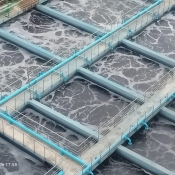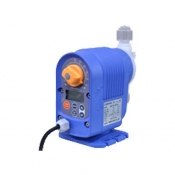Effluent Treatment Plant
ETP (Effluent Treatment Plant) is a treatment process used to treat industrial wastewater, which typically contains pollutants and contaminants produced during industrial operations. Industrial wastewater treatment involves various physical, chemical, and biological processes to remove harmful substances. After treatment, the effluent (treated wastewater) can either be reused in the industry, released into a sanitary sewer system, or discharged into surface waters, such as rivers or lakes, without harming the environment.
Most industries produce wastewater as part of their processes. However, recent trends focus on minimizing wastewater production and promoting recycling or reusing treated wastewater within the industrial process to conserve resources and reduce environmental impact.
Sources of industrial wastewater
- Battery manufacturing
- Electric power plants
- Food industry
- Nuclear industry
- Organic chemicals manufacturing
- Petroleum refining and petrochemicals
- Pulp and paper industry
- Textile dyeing, washing, printing mills
- Industrial oil industry
- Edible oil industry
- Pharmaceutical
- Agro process industry
- Fish Processing
Types of ETP (Effluent Treatment Plant):
- Chemical ETP
- Physio-Chemical: Uses chemical methods to treat wastewater, removing solids and contaminants.
- Bio-Chemical: Uses microorganisms to remove organic pollutants, include chemical treatments for enhanced efficiency.
- Physio-Chemical: Uses chemical methods to treat wastewater, removing solids and contaminants.
- Biological ETP
o Activated Sludge Process (ASP): In ASP, aeration tanks promote the growth of microorganisms that consume organic matter. The resulting sludge is then separated, treated, and disposed of appropriately. This process is widely used due to its efficiency in treating high organic loads.
o Membrane Bio-Reactor (MBR): MBR combines activated sludge treatment with membrane filtration. This results in higher-quality effluent, particularly for industries needing treated water for reuse. It’s an advanced method offering compact design and reduced space requirements.
o Moving Bed Biofilm Reactor (MBBR): MBBR involves biofilm carriers that move freely in aeration tanks. This enhances biological treatment, allowing for higher treatment capacity in smaller tank sizes. It is suitable for both municipal and industrial wastewater treatment.
o Sequence Batch Reactor (SBR): SBR is a batch process that treats wastewater in cycles. It allows for the treatment of different types of wastewater by controlling aeration and settling phases in sequence. SBR is cost-effective and used for treating low to medium strength wastewater.
Bio-Chemical Vs Bio-Logical ETP:
The choice between Bio-Chemical and Bio-Logical ETP systems depends on several factors, including the type of wastewater, treatment efficiency, and cost considerations.
Bio-Chemical ETP systems typically require a lower initial investment compared to Bio-Logical systems. These systems rely on chemical processes such as coagulation, flocculation, and neutralization, which require less space and infrastructure. However, despite the lower initial cost, Bio-Chemical systems have higher operational costs due to the consumption of chemicals for the treatment process. The need for chemicals increases the overall running expenses, and the system also requires moderate to high energy for chemical treatments and aeration. The retention time in Bio-Chemical systems is shorter, as the chemical processes accelerate pollutant removal. However, this system generally produces a higher volume of sludge compared to biological systems.
In contrast, Bio-Logical ETP systems require a higher initial investment because they need larger biological treatment units, such as aeration tanks, biofilm reactors, or activated sludge systems. These systems primarily rely on biological processes, which take longer to break down organic contaminants, resulting in longer retention times and the need for larger aeration systems. The infrastructure for biological treatment, including the instruments and controls required for optimal performance, contributes to the higher upfront costs. However, Bio-Logical systems typically have lower operational costs because they use fewer chemicals, relying more on natural biological processes. Despite this, the energy demand for aeration can be significant due to the high oxygen demand of the biological units.
In summary, Bio-Chemical ETP systems are more cost-effective compare with Bio-Logical ETP System in terms of initial investment but incur higher chemical consumption and operational costs. On the other hand, Bio-Logical ETP systems involve higher initial costs but can offer long-term savings in terms of chemical use and operational expenses, especially when treating organic-huge wastewater.
Published on: Sunday, 9 February 2025, 01:15 am ▪ Last update: Tuesday, 6 May 2025, 02:34 pm ▪ Total View of this Page: 668


.png)


